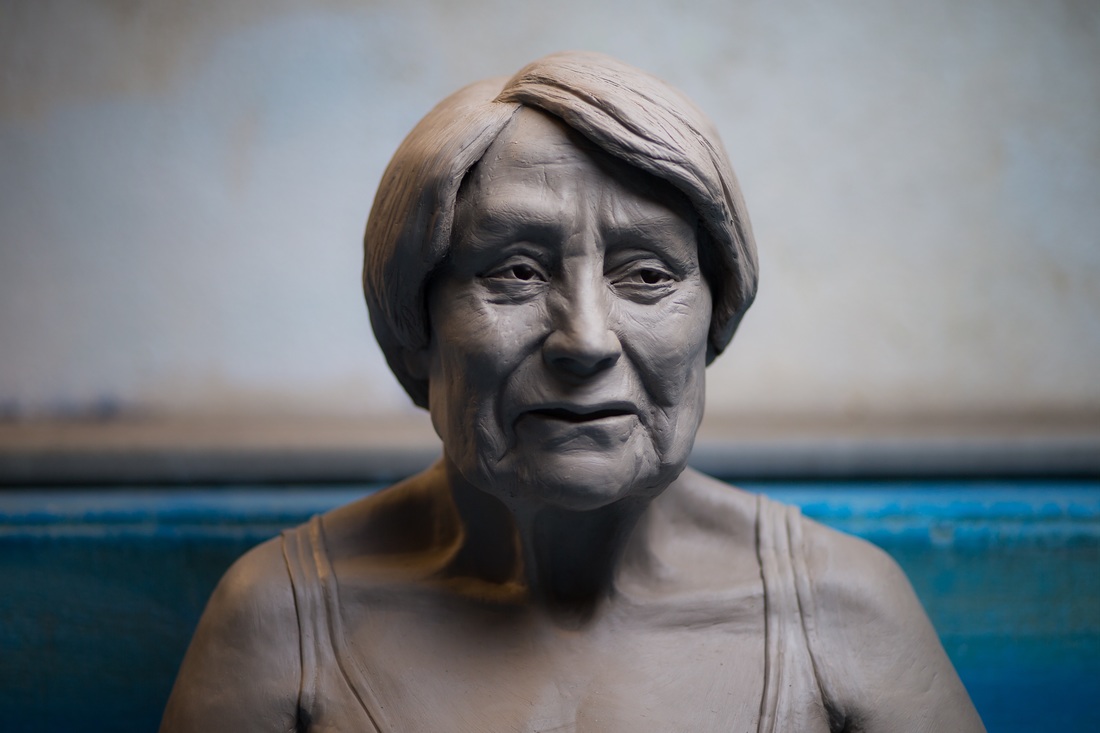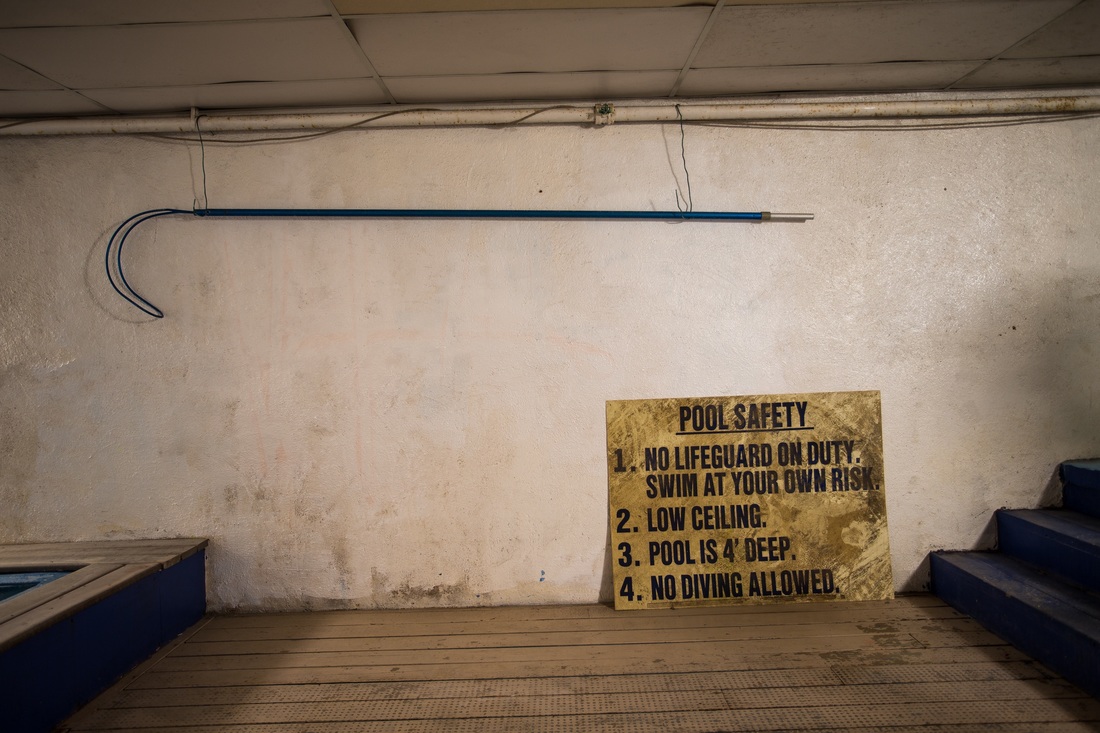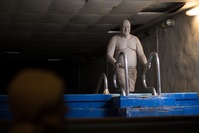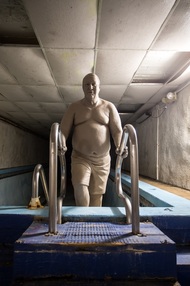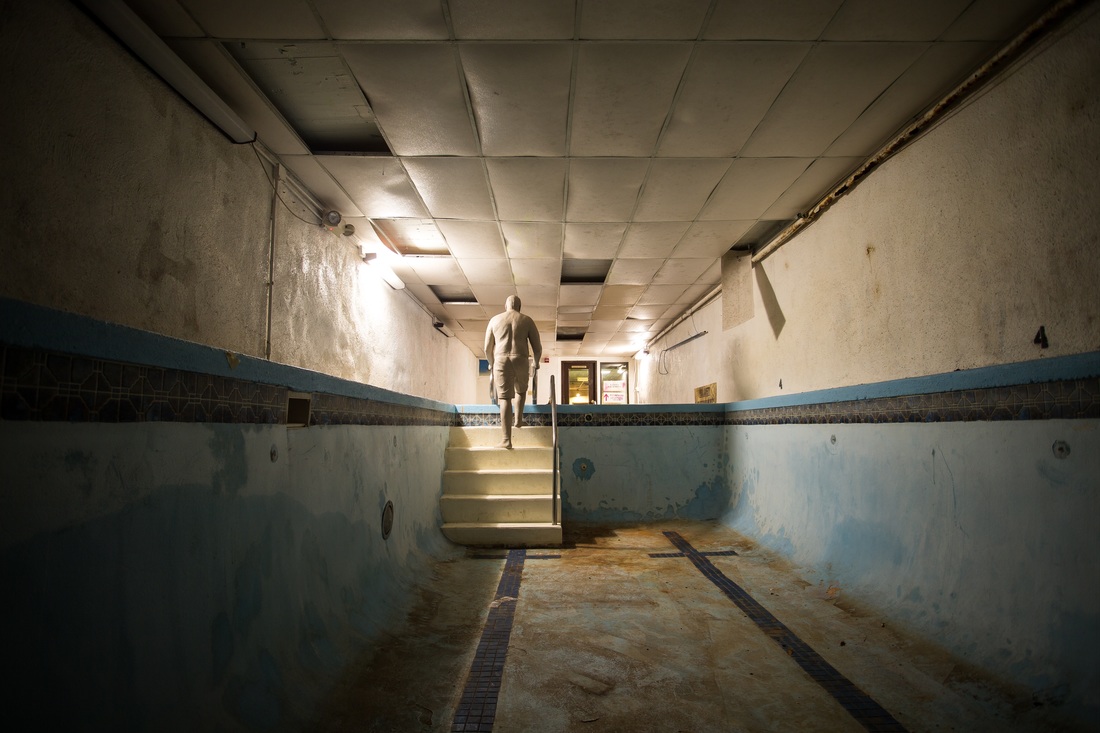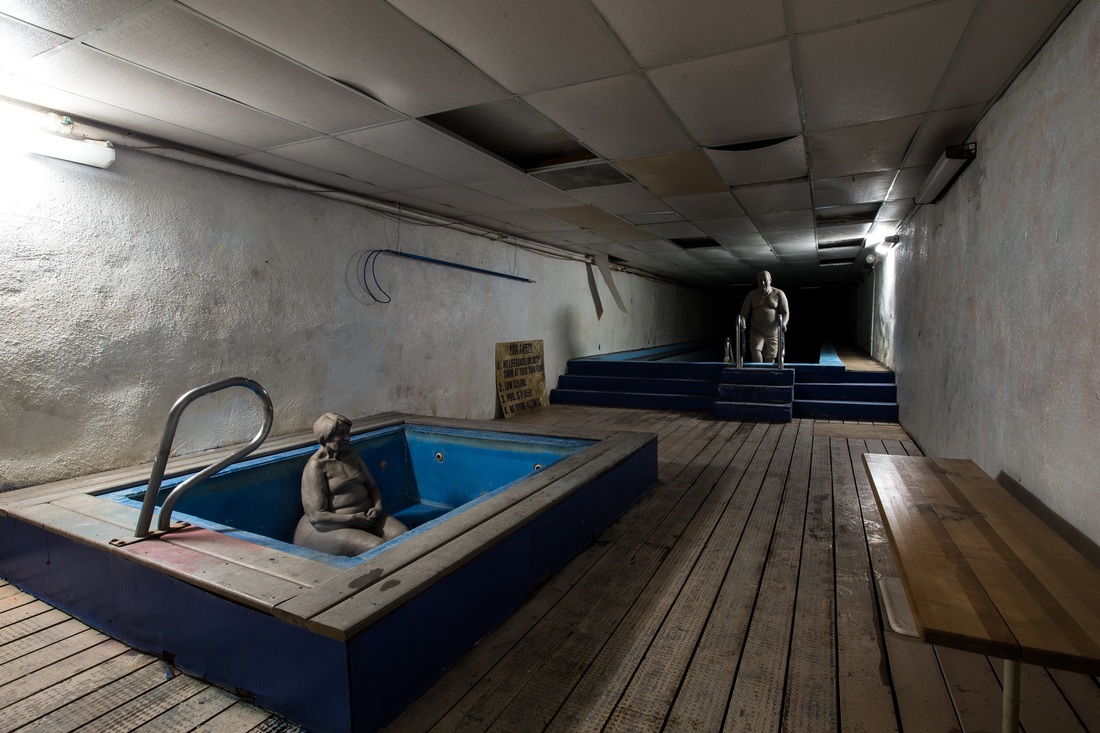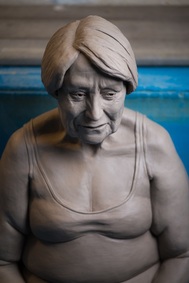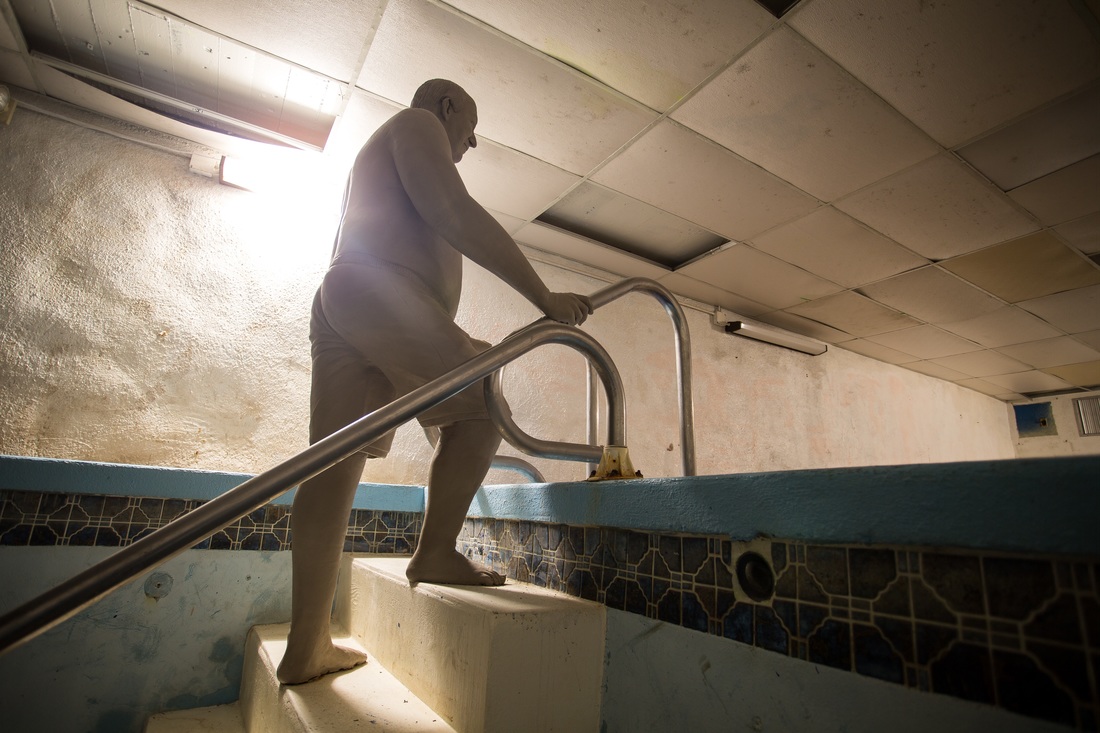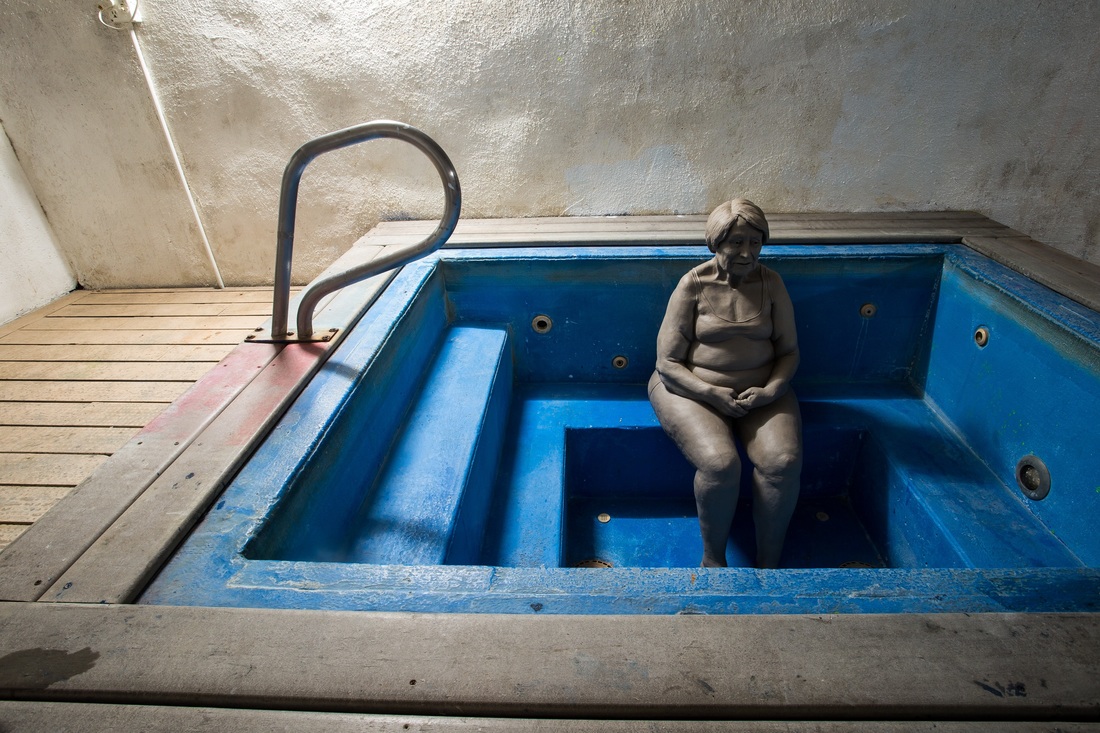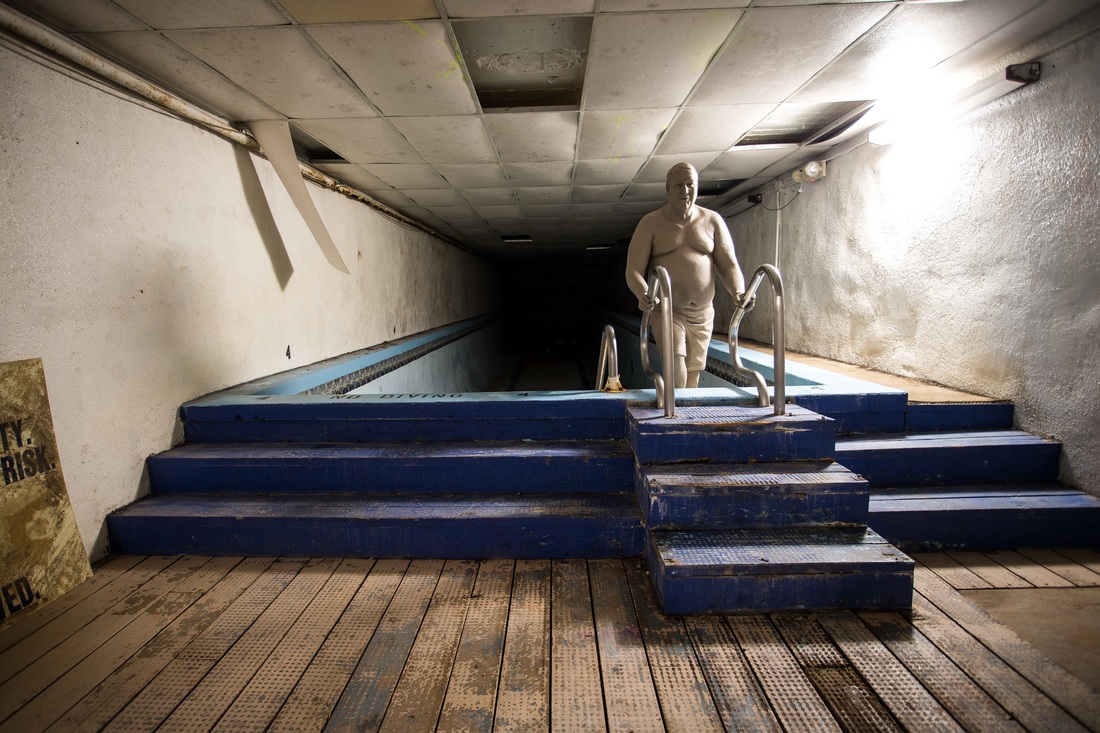East Bank Athletic Club
Abandoned properties are both created by communities for social good and then collectively discarded when their purpose is no longer desired. Once the Indiana and Michigan Electric Company and later adapted into the East Bank Athletic Club; the Commerce Center basement is a marker of South Bend’s history, social needs, and goals for the past century. My work responds to the progression of time within this history.
The owner, architect, contractor, employee, and member all play a role in the aesthetics and history of the former East Bank Athletic Club. Each scar and mark in the space is evidence of experience and use. Our social spaces are reflections of those who constructed and used them. Through meeting the people who used and constructed this space, I began to understand the people of South Bend who are tied together through this dissonant location. The clay figures are not only portraits of the former inhabitants but are also fixtures within the decaying space. The act of firing clay turns it into a ceramic material that is a durable and movable object.
These unfired clay sculptures are impossible to move without destroying them, therefore they become a part of the environment. The materiality of clay speaks to the passing of time. Over the course of the installation, the clay dries, cracks, and changes color and temperature. The drying clay releases water into the atmosphere, acclimating slowly to its humid environment. The scars and wrinkles on each figures are markers of time just as the fallen ceiling tiles and mildewed air of the space. The basement of the Commerce Center was once the foundation of power and infrastructure to a developing city, then a means of health and recreation, and is now a site of memories, reflection, and creation.
The owner, architect, contractor, employee, and member all play a role in the aesthetics and history of the former East Bank Athletic Club. Each scar and mark in the space is evidence of experience and use. Our social spaces are reflections of those who constructed and used them. Through meeting the people who used and constructed this space, I began to understand the people of South Bend who are tied together through this dissonant location. The clay figures are not only portraits of the former inhabitants but are also fixtures within the decaying space. The act of firing clay turns it into a ceramic material that is a durable and movable object.
These unfired clay sculptures are impossible to move without destroying them, therefore they become a part of the environment. The materiality of clay speaks to the passing of time. Over the course of the installation, the clay dries, cracks, and changes color and temperature. The drying clay releases water into the atmosphere, acclimating slowly to its humid environment. The scars and wrinkles on each figures are markers of time just as the fallen ceiling tiles and mildewed air of the space. The basement of the Commerce Center was once the foundation of power and infrastructure to a developing city, then a means of health and recreation, and is now a site of memories, reflection, and creation.
Photography Credit: Ryan Hodges

